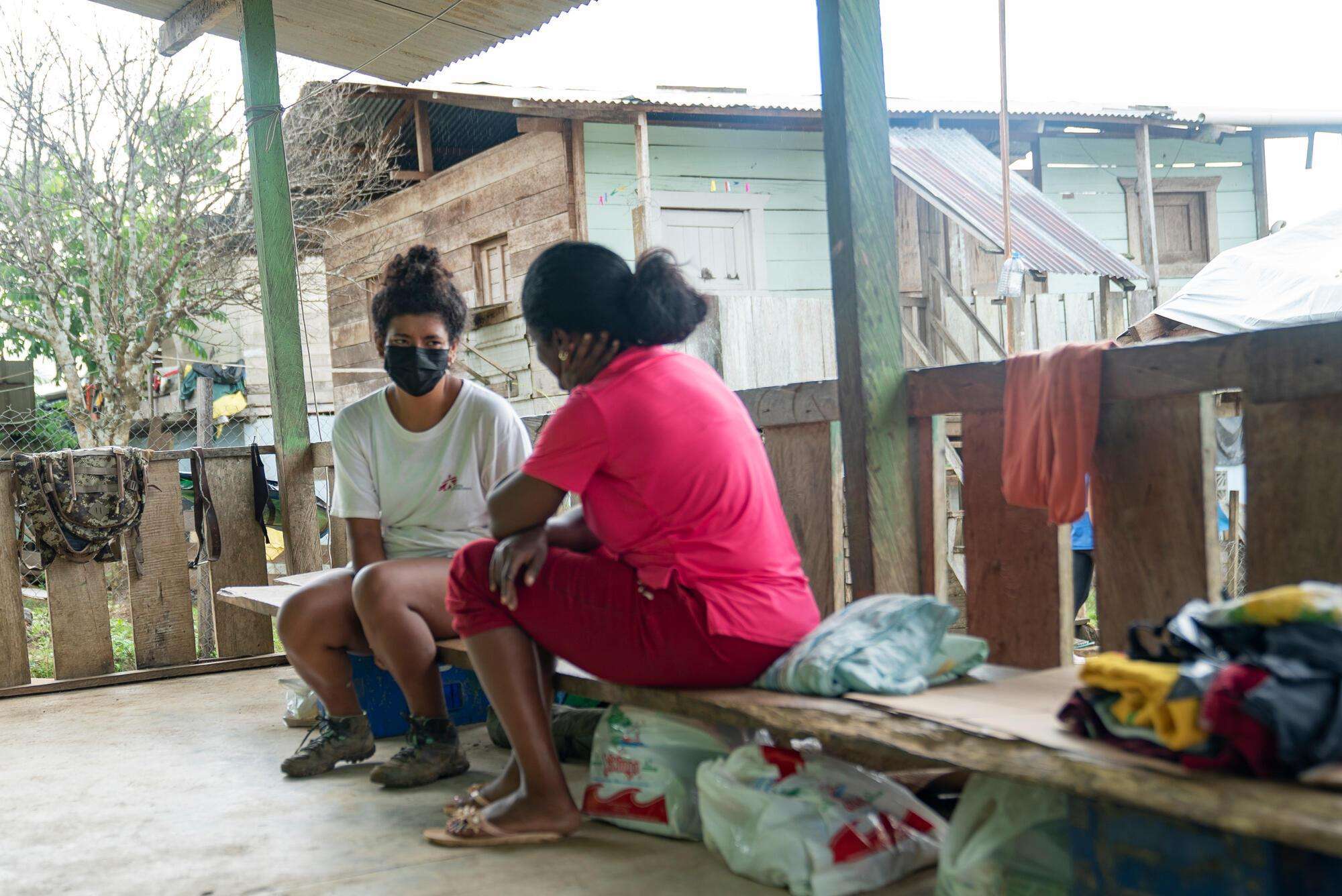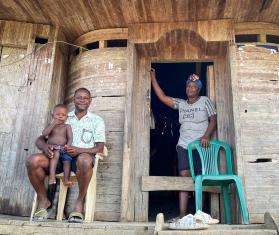Between January and May of this year, more than 15,000 migrants from all over the world crossed through the dangerous Darién Gap from Colombia into Panama. By the time migrants reach this particularly difficult passage, most have already been on the road for weeks or months. Not only is the crossing physically grueling and risky, but people also experience being attacked, robbed, and sexually assaulted on the route.
In May, Doctors Without Borders/Médecins Sans Frontières (MSF) began medical and mental health care in Bajo Chiquito, the first town migrants enter after reaching Panama, as well as in the migrant reception centers in San Vicente and Lajas Blancas.
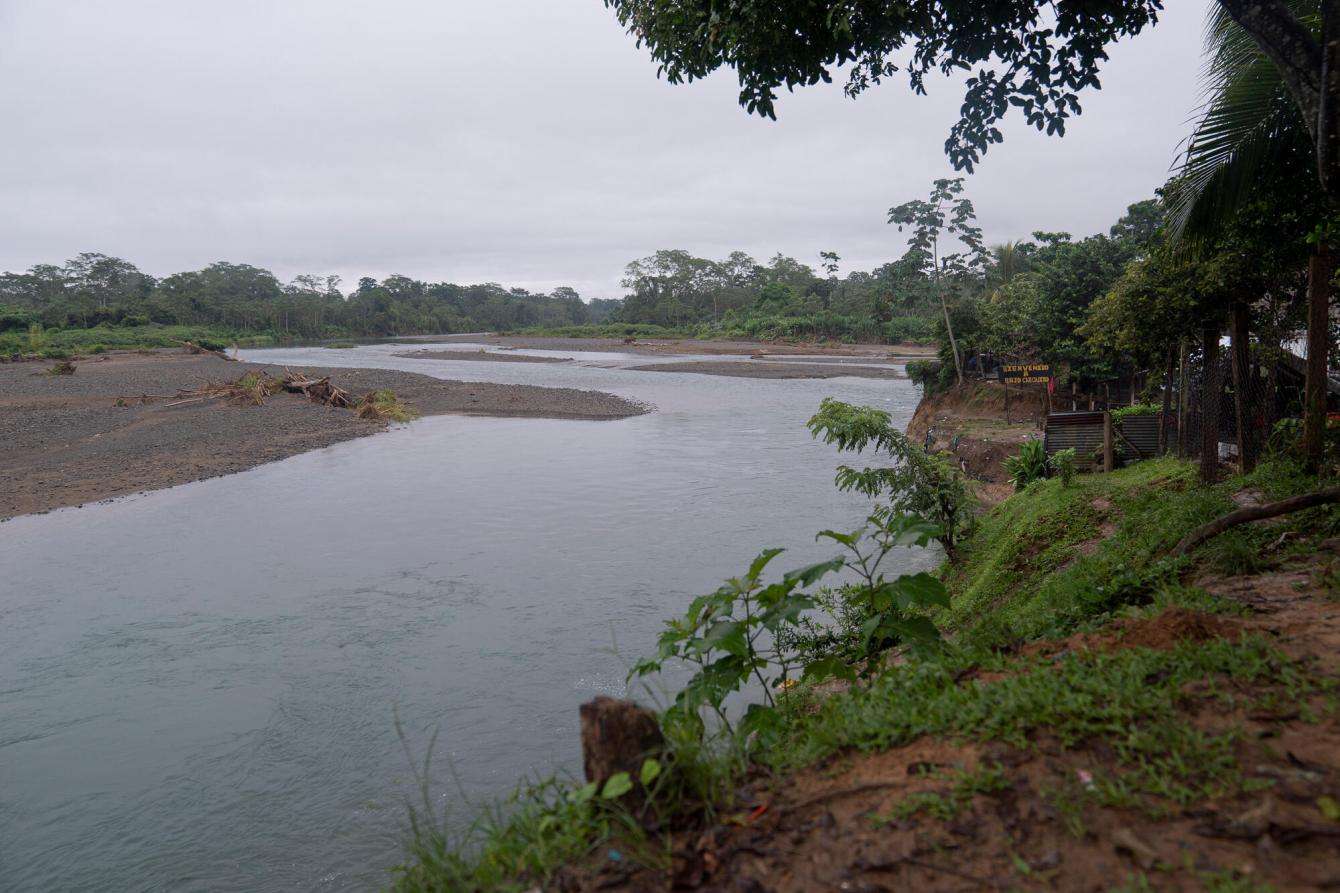
The Turquesa River flows through the village of Bajo Chiquito in the Emberá-Wounaan comarca, or indigenous region, of Panama. Bajo Chiquito is one of the first populated places on the Panamanian side of the Darién Gap, a dangerous 60-mile (97-kilometer) stretch of roadless land that connects the North and South American continents between Panama and Colombia. Migrants heading north must travel for days through the jungle; they arrive in Bajo Chiquito either on foot, or, if they can pay a fee, in a canoe for the last leg of the trip. Those piloting canoes have also rescued people in the jungle who were unable to continue the journey. Migrants arrive in Bajo Chiquito by the hundreds on a weekly basis.
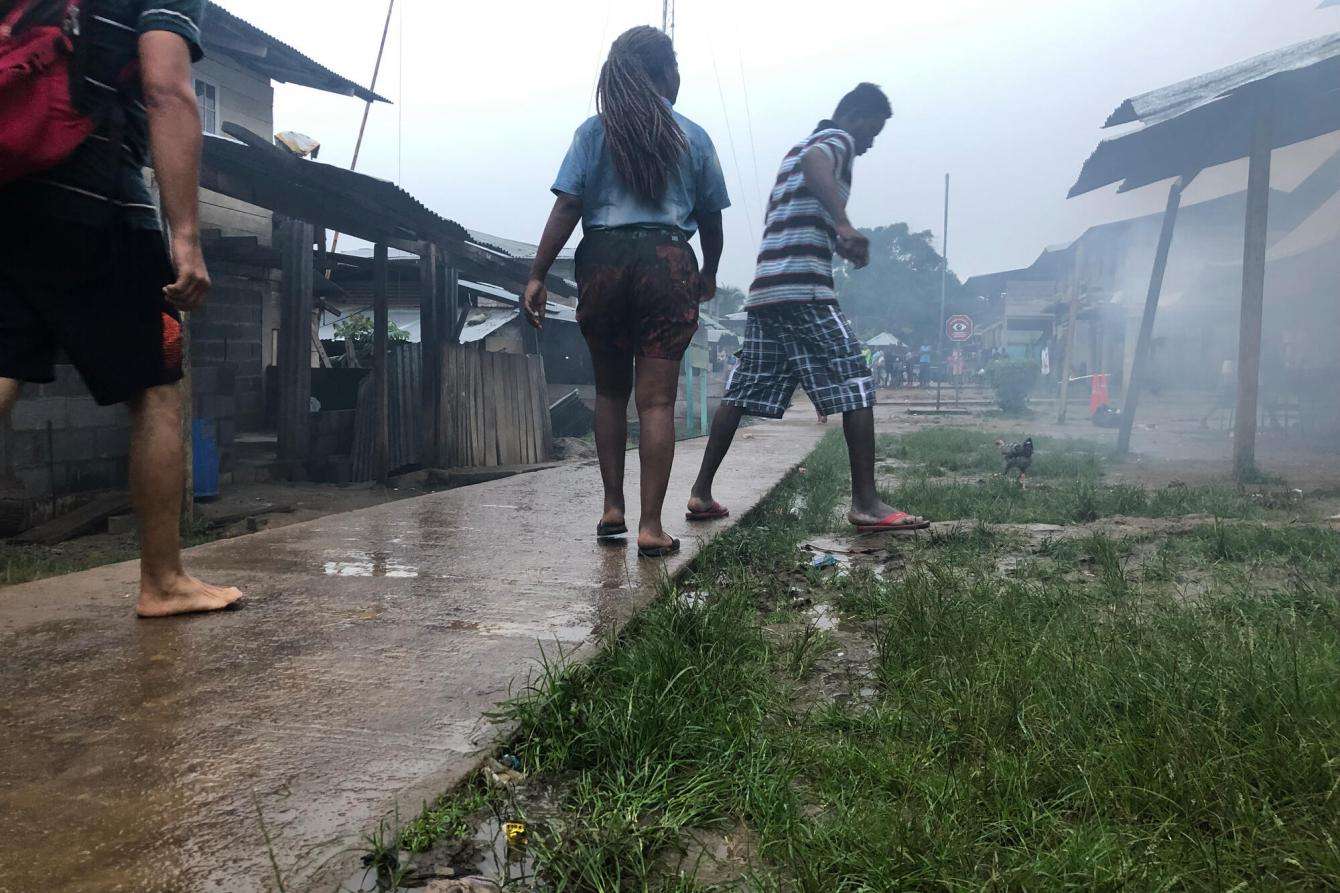
Crossing the Darién Gap can take four to 10 days or longer through a dense and muddy jungle with mountains—the most infamous is called the Hill of Death or the Devil's Hill—cliffs, and ravines. People encounter flash floods, insects, and snakes. The journey requires walking for long periods of time at a rapid pace, often while people are experiencing hunger and thirst. Gangs rob migrants of their belongings and food, and they sexually abuse female migrants. MSF is providing medical services in Bajo Chiquito for people who arrive there injured, exhausted, terrified, and disoriented after the dangerous crossing.
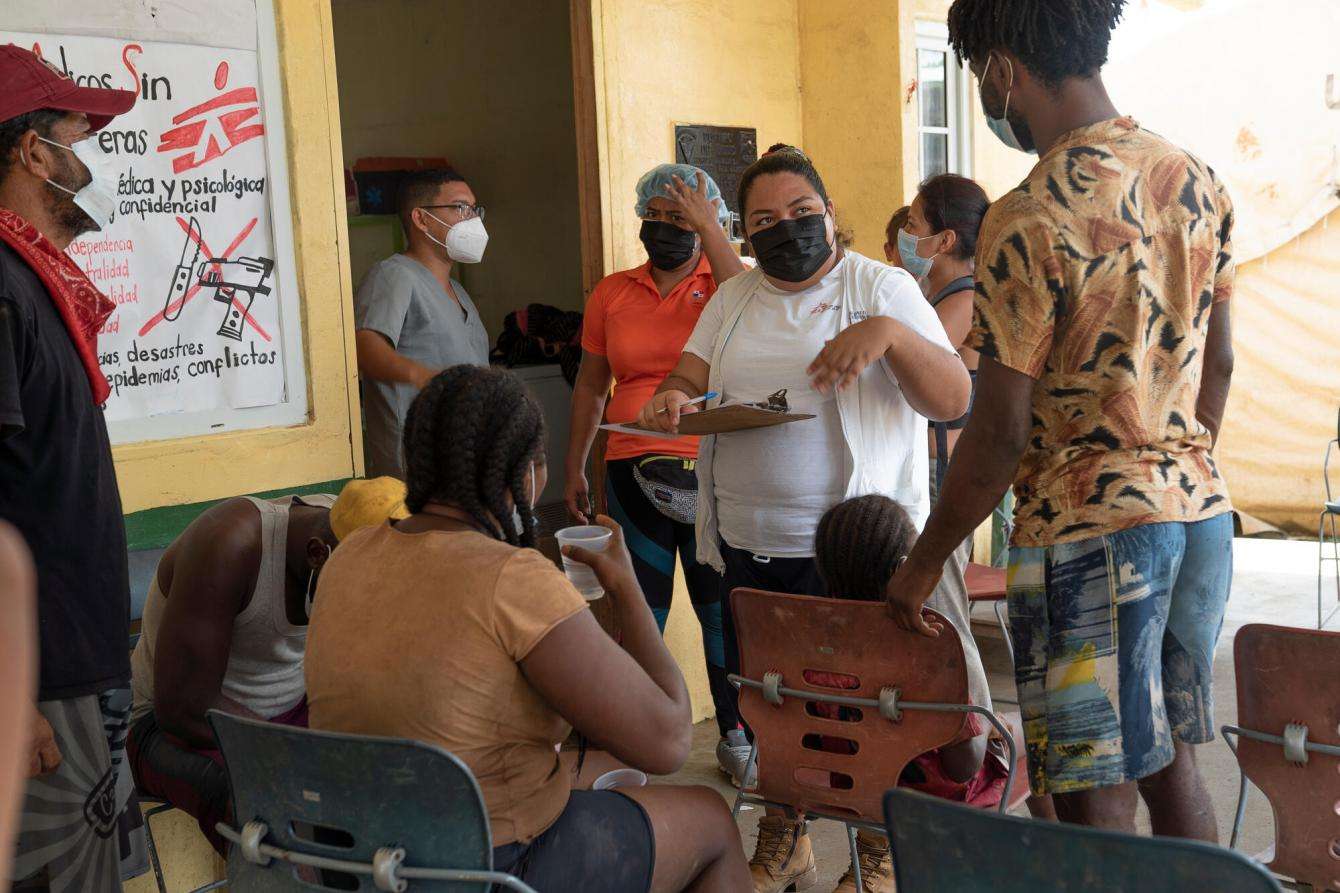
MSF staff speak with patients at the Bajo Chiquito health center. In spite of the extreme danger, in recent months the Darién Gap has become a much-used passage for thousands of migrants of different nationalities. The majority are Haitian migrants who were working in Brazil, Chile, and Peru, and lost their jobs due to COVID-19, so decided to migrate north. There are also high numbers of Cuban and Venezuelan migrants.
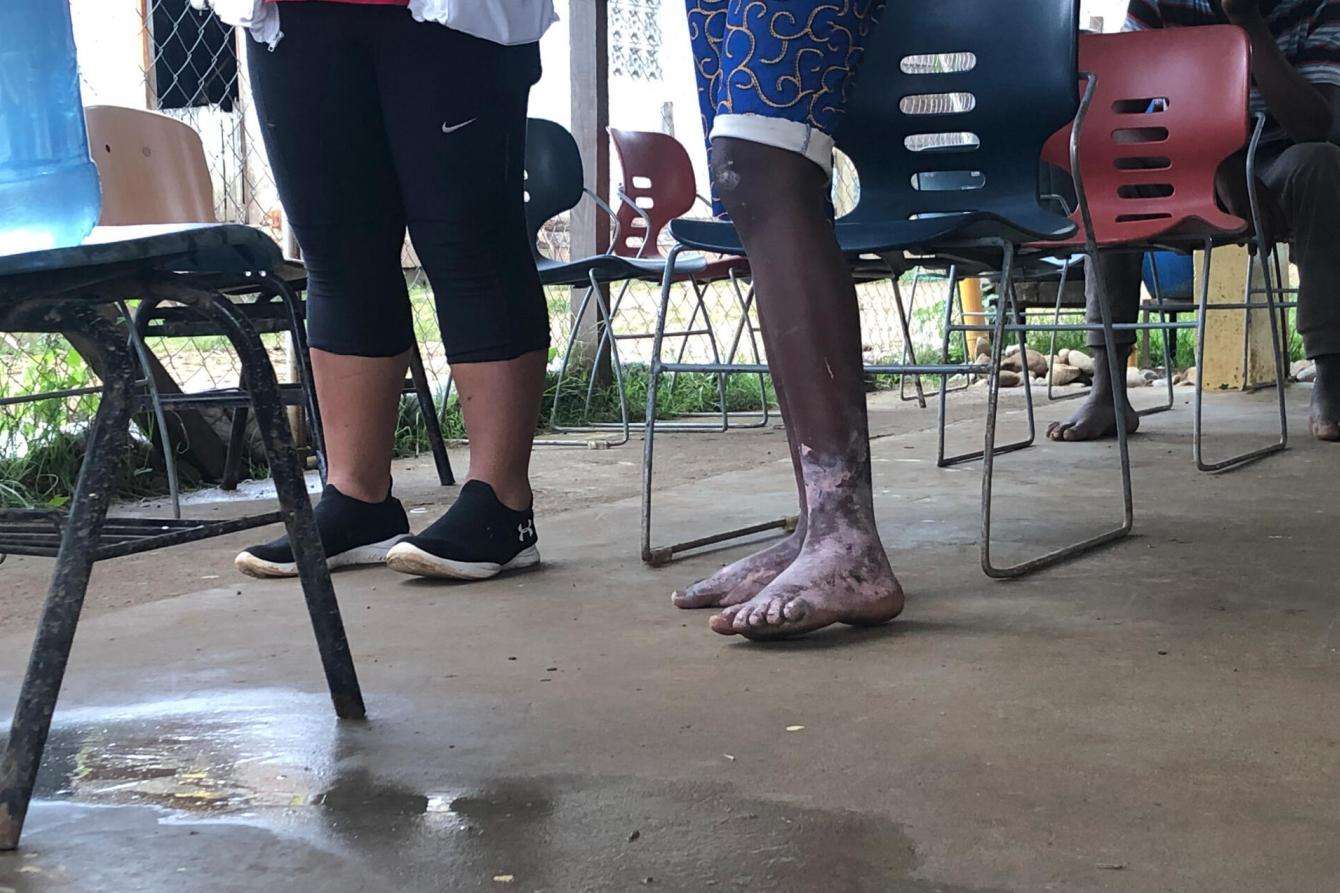
MSF works in Bajo Chiquito in partnership with the Ministry of Health. Most of the pathologies MSF staff see are the results of walking in a tropical jungle for days, including serious foot wounds, bites and stings from insects, wounds and trauma from falls or jolts, dehydration, hypothermia, malnutrition, and diarrhea and vomiting from drinking river water. Families with children and pregnant women also attempt to cross the Darién Gap; MSF prioritizes babies and pregnant women for care when they arrive in Bajo Chiquito. The health center treats members of the local community as well as migrants.
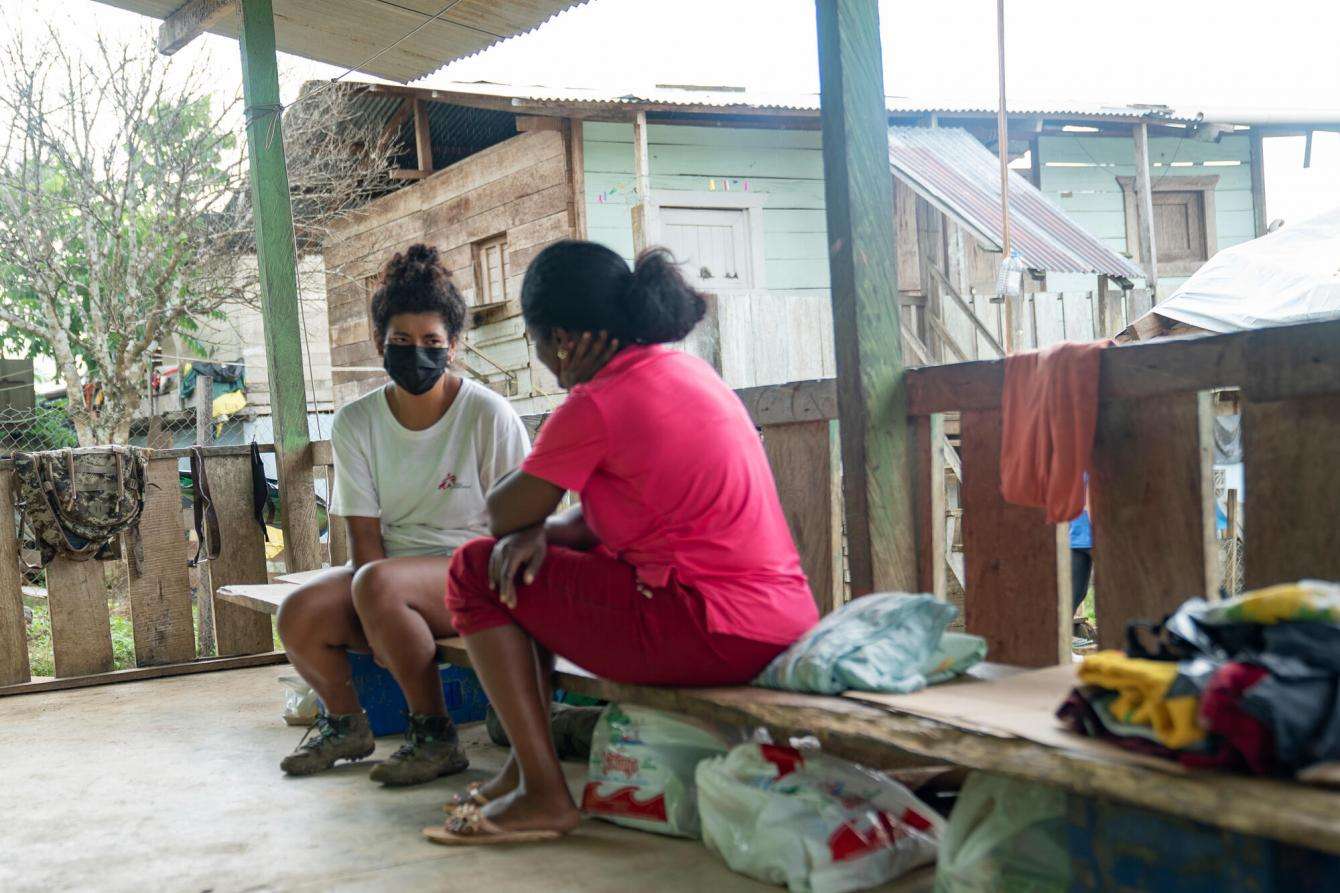
Patients have told MSF staff about seeing people with broken ankles and foot injuries, and people who simply did not have the strength to continue, who were left behind in the jungle with no one to help them. They’ve seen dead bodies of people, including children, who fell down ravines or drowned.
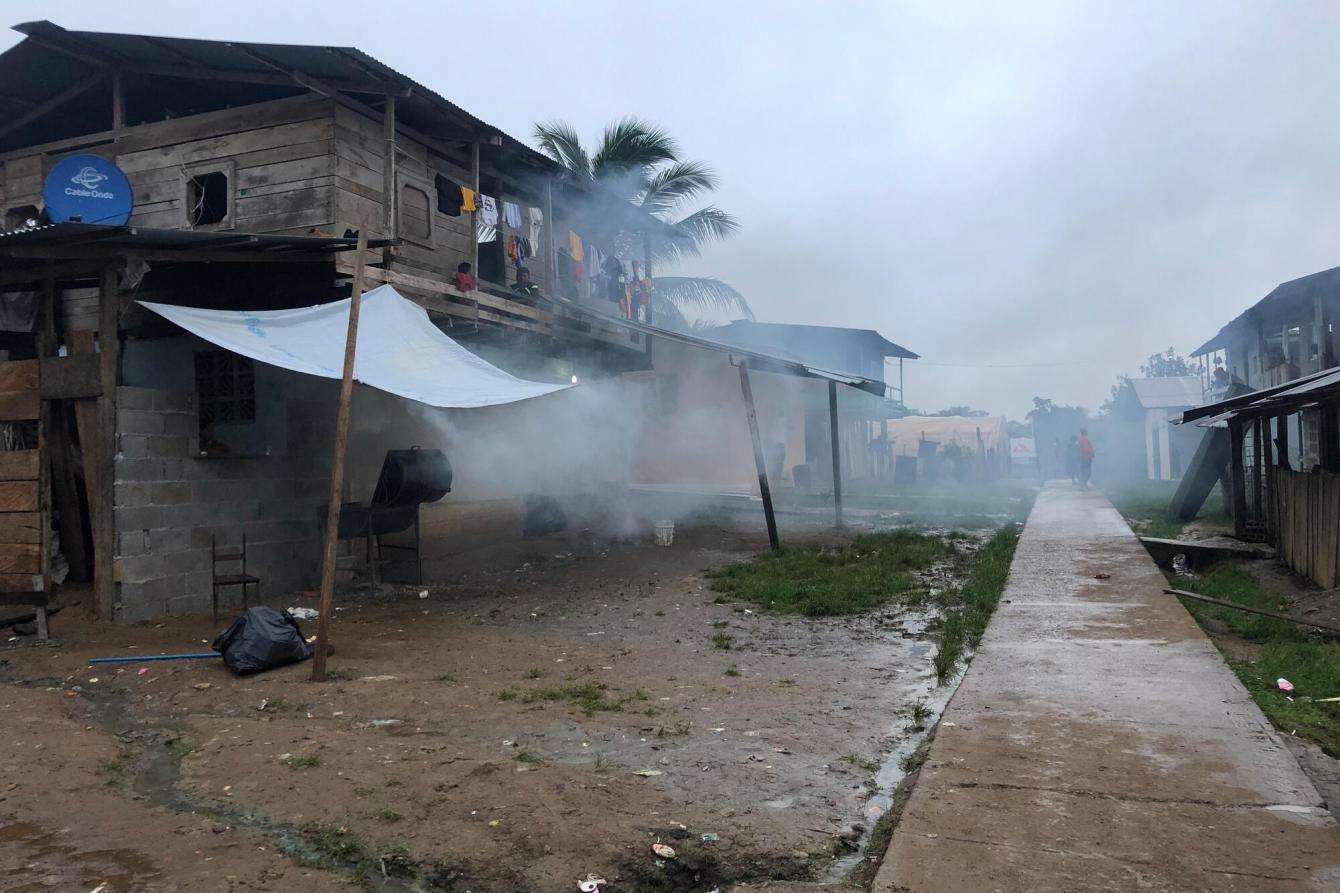
Migrants arriving in Bajo Chiquito have many unmet needs. They enter Panama exhausted, wet, bruised, and barely able to stand on their battered feet. They are registered by the authorities and receive a bag of food. After that, they must fend for themselves. Often, migrants pay local residents for space in a room or a place to pitch a tent. They also look for a place to cook and a way to contact their families to tell them they are okay, or to ask them to send money to help support the journey onward.
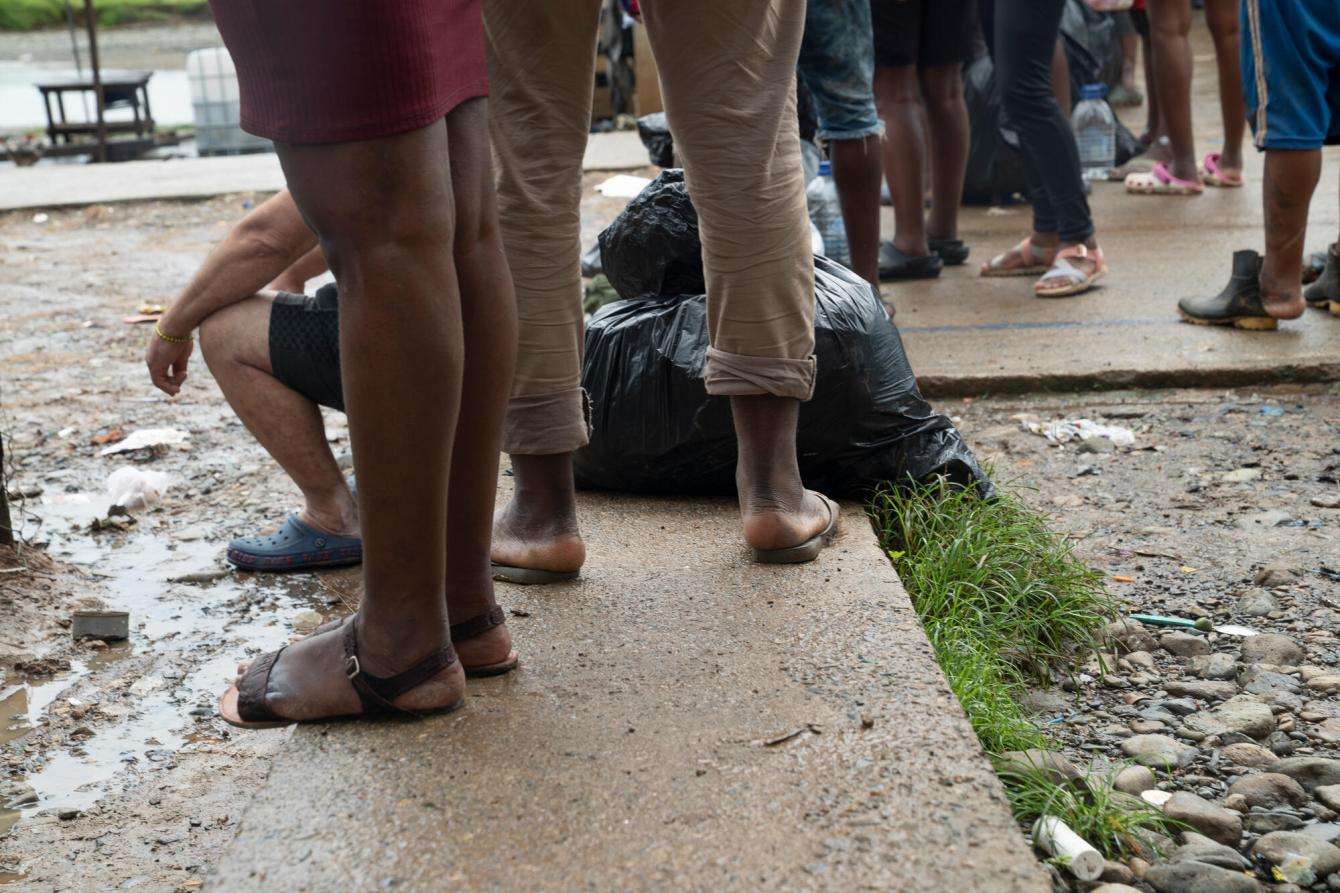
After people have been in Bajo Chiquito for one to three days, the authorities arrange for their transfer to migrant reception stations. At the village court, the authorities separate migrants according to their nationalities. In this photo, we see a few of the people who were ready to be transferred on June 12. They included Haitians, Cubans, Venezuelans, Senegalese, Sierra Leoneans, Dominicans, Bolivians, and Ecuadorians. Migrants from India, Bangladesh, Pakistan, and Yemen have also passed through the Darién Gap.
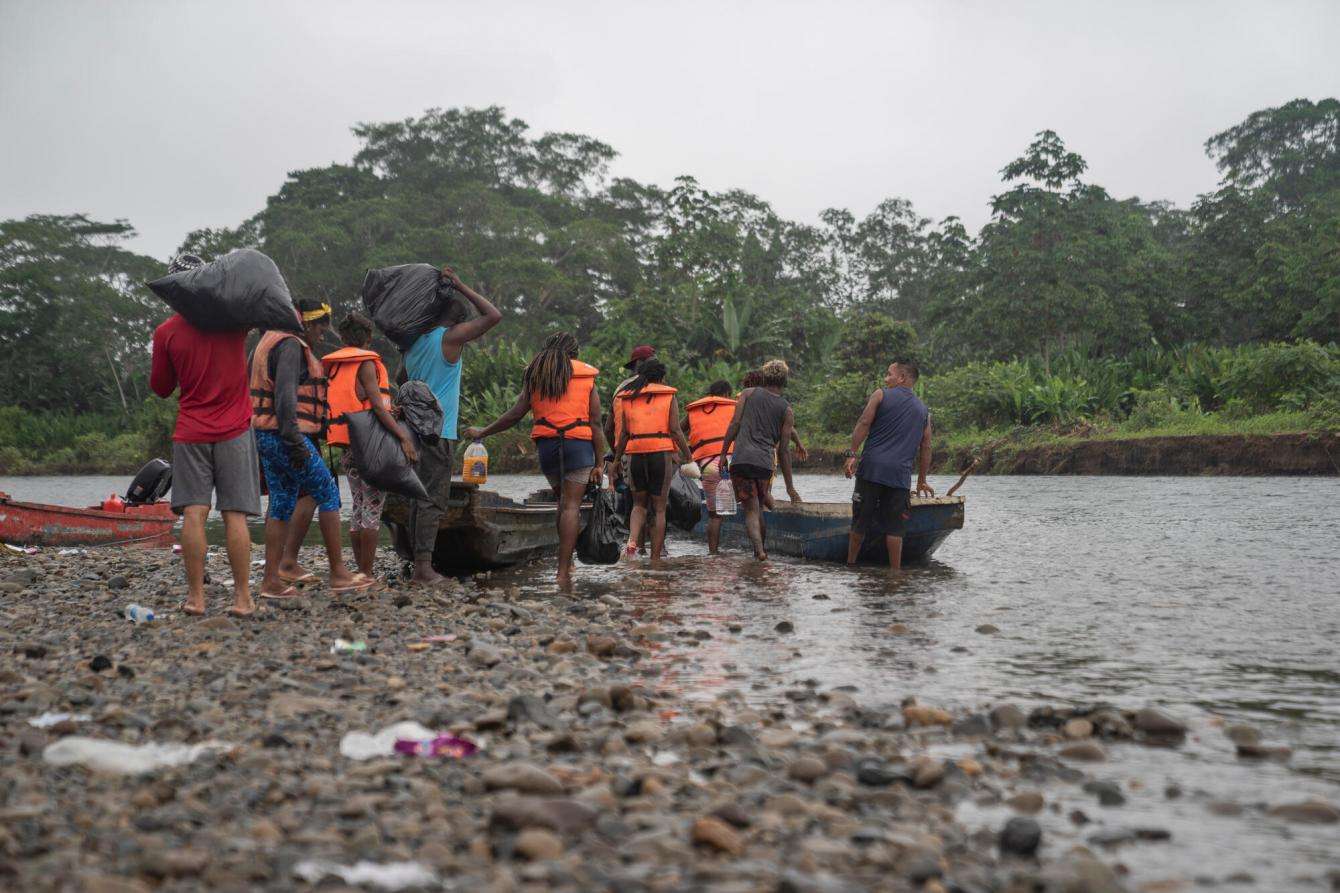
The only way to transfer migrants from Bajo Chiquito to the reception stations in the rainy season is by canoe, with a capacity of about 13-15 people per boat. The canoes travel together, so their departure can take several hours. The transfer pictured here had to be postponed due to heavy rains, which made the river trip too dangerous.
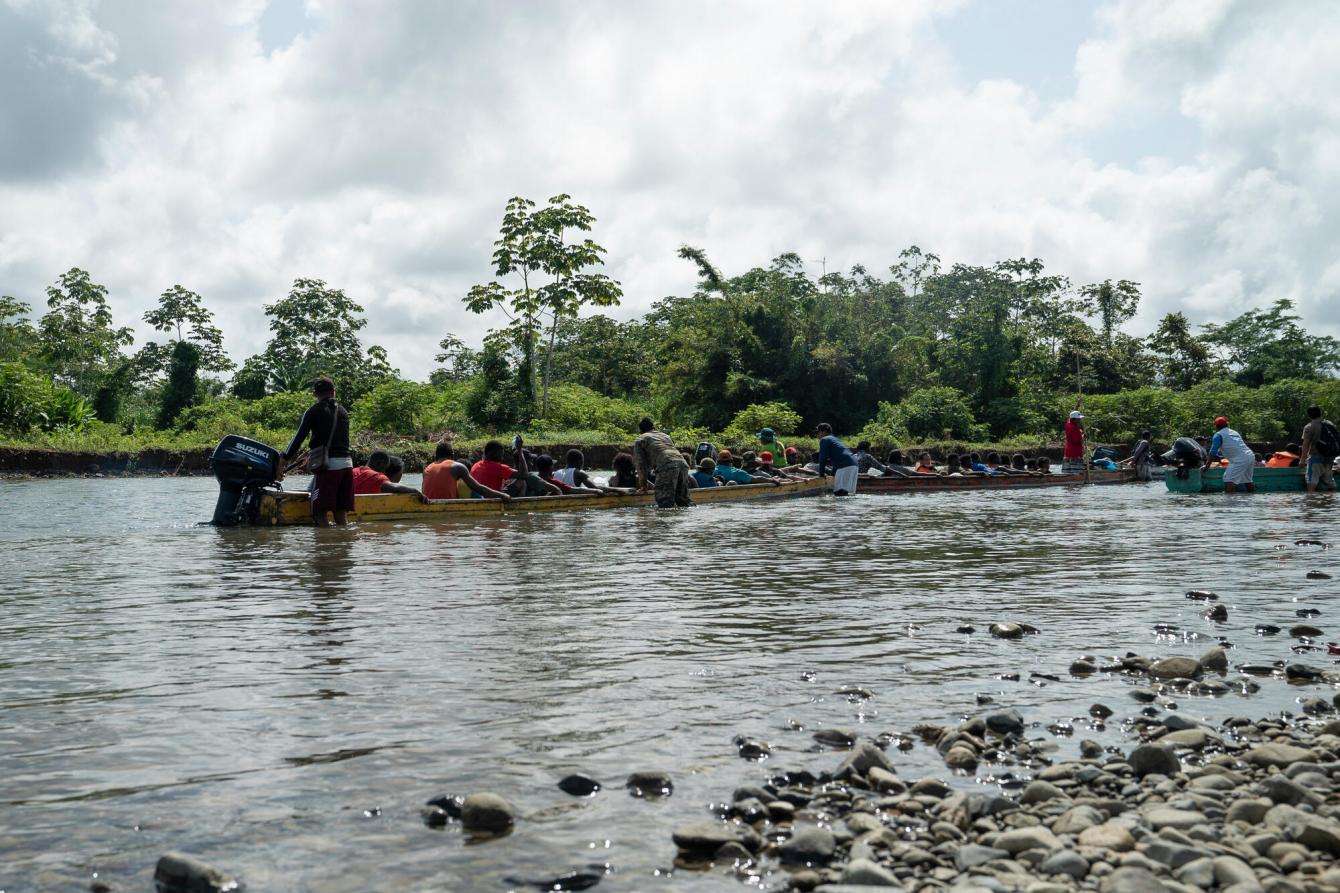
A group of canoes departed Bajo Chiquito on June 13 for the reception stations. Migrants celebrate leaving the village and, above all, leaving the Darién Gap behind. However, many are unaware that their stay in the reception centers in Panama could be quite long. And once they leave Panama, there are more than 3,100 miles (5,000 kilometers) to go—through Costa Rica, Nicaragua, Honduras, Guatemala, and Mexico—before reaching the United States, the final destination for most of these people forced from their homes.
